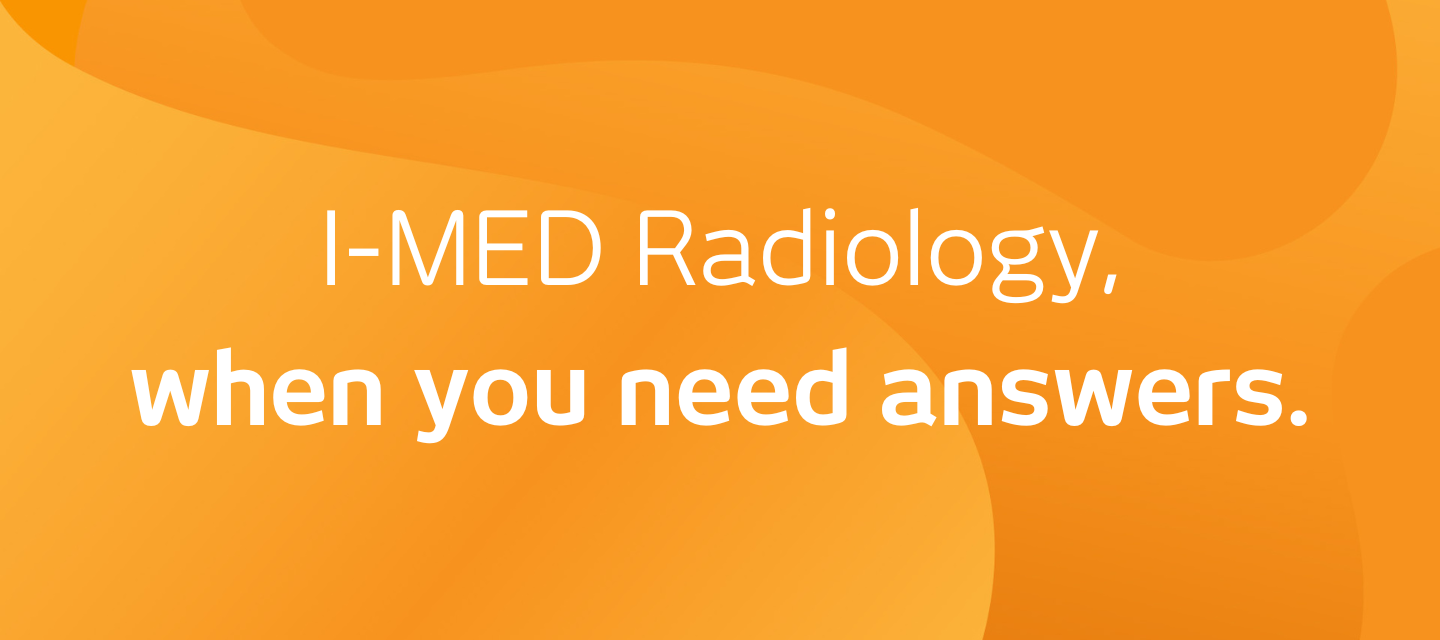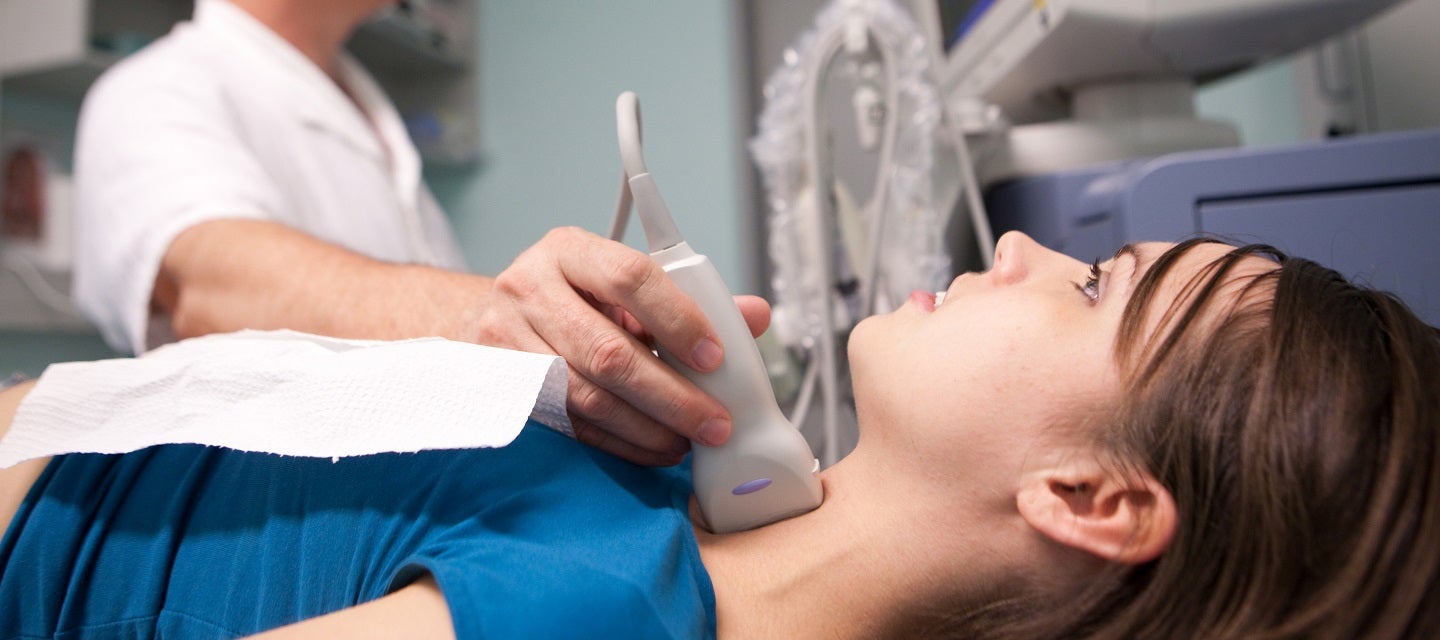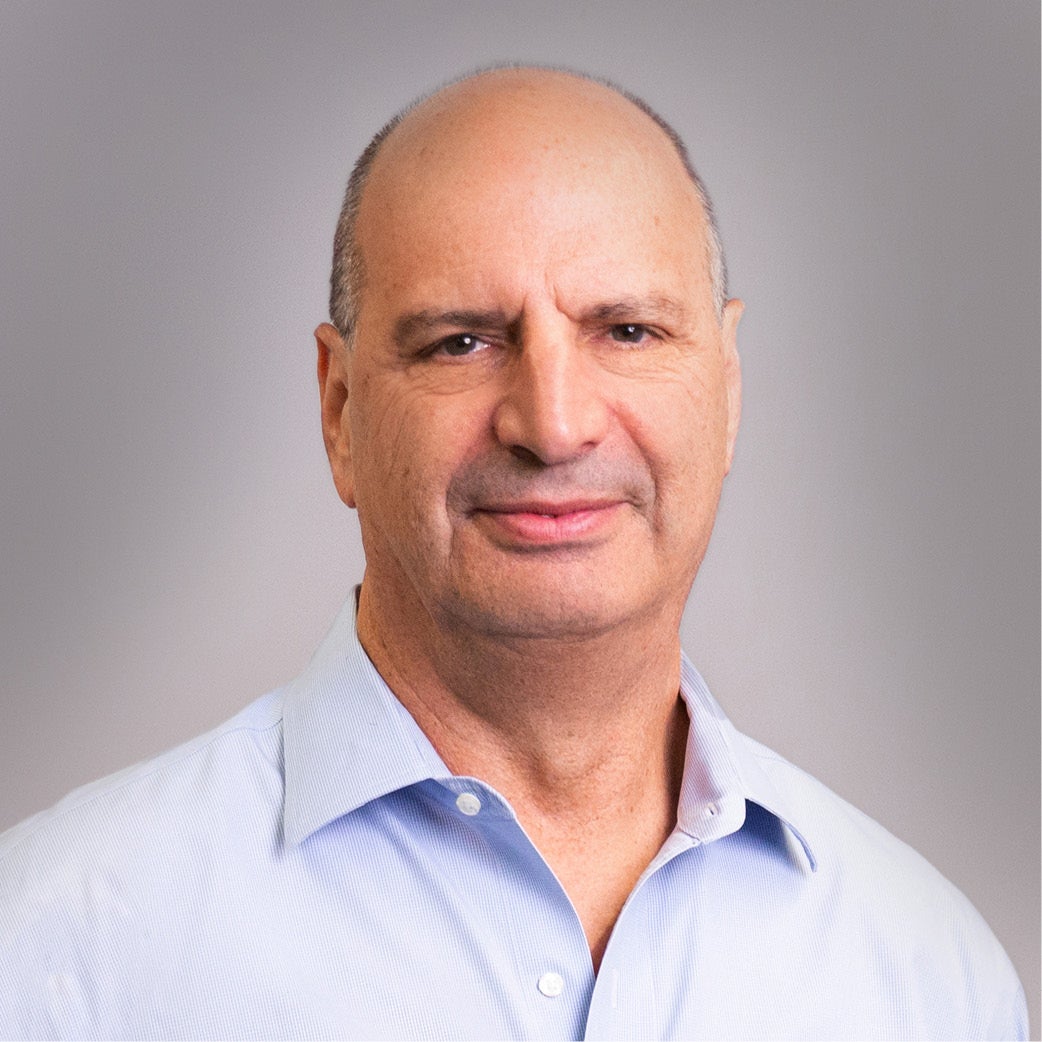

Thyroid fine needle aspiration (FNA)
Thyroid fine needle aspiration (FNA)

What is a thyroid FNA?
The thyroid is a soft gland in the front of the neck, in front of the trachea, or ‘windpipe’.
The thyroid gland is important because it produces hormones that control metabolism, or the rate at which the body uses fuel. A fine needle aspiration (FNA) is a test that samples a small amount of tissue from the thyroid with a very thin (or ‘fine’) needle.
Why would my doctor refer me to have a thyroid FNA? keyboard_arrow_down
The most common reason for people to have a thyroid FNA is to find out the cause of a thyroid lump (also called a ‘nodule’). The nodule might be something that you or your doctor have noticed because:
- You can see or feel a lump in the front of the neck in the area of the thyroid.
- You have general swelling in the thyroid area and your doctor sent you to have an ultrasound examination that showed one or more nodules in the gland.
- You had a thyroid problem detected while having a scan (or imaging) test for other reasons.
The most common tests that show thyroid nodules are:
- Ultrasound of the neck;
- Computed tomography (CT) scanning that includes the neck or PET CT scanning of the whole body;
- Nuclear medicine scanning of the thyroid.
In all of these cases, thyroid FNA is carried out to discover the cause for one or more nodules in the gland. Thyroid nodules are extremely common, being found on ultrasound in up to approximately 50% of adults. Palpable nodules (nodules that can be felt) are much less common, being present in approximately 5% of women and 1% of men.
Much less often, a nodule or nodules in the thyroid gland is a result of cancer. Most thyroid cancers have an excellent outcome if they are diagnosed and treated early. The reason for carrying out thyroid FNA in most cases is to confirm that the nodule or nodules in your thyroid are not a result of cancer.
How do I prepare to have a thyroid FNA? keyboard_arrow_down
There is no preparation before your procedure. You can eat and drink normally before and after.
You will not require a general anaesthetic, although you may be given local anaesthetic to numb the area of the skin where the FNA needle is inserted.
When you make your appointment, you need to let our staff know if you are taking any blood thinning medication, such as warfarin, clopidogrel, dabigatran, prasugrel, dipyridamole or asantin.
Blood thinning medications may need to be stopped for a short period of time, or your normal dose reduced, before this procedure is carried out. It is very important that you do not stop any of these medications or change the dose without consulting both your own doctor and the clinic where you will have the FNA. They will give you specific instructions about when to stop and restart the medication.
A blood test may be required to check your blood clotting on the day of the procedure.
It is important to take any previous scans or your thyroid that you have to your appointment. The FNA will be carried out using ultrasound to guide the placement of the needle within the thyroid gland.
What happens during a thyroid FNA?
keyboard_arrow_down
An ultrasound machine will be used to locate the nodule or nodules to be sampled and show images or pictures of the nodule or nodules onto a screen.
You will generally be lying on an examination couch for the procedure.Your neck will be washed with antiseptic.
Sometimes, local anaesthetic is injected to numb the skin before an FNA is carried out. A very small needle will be guided into the thyroid nodule with the assistance of ultrasound images. Once in the nodule, the needle will be ‘jiggled’ a few millimetres back and forth in order to take a sample of the tissue in the nodule, and then the needle will be removed. Very often, the needle will need to be inserted and tissue samples removed two or three times until enough tissue to enable a proper study of the nodule is obtained. If you have more than one thyroid nodule, this procedure may need to be repeated for each nodule.
The needle puncture site in your neck will be compressed (pressure put on the site to stop any bleeding) for a couple of minutes by the radiologist, assisting nurse or sonographer. You may be taken from the ultrasound room into an observation area for a short time to ensure that you are well enough before you go home.
Are there any after-effects of a thyroid FNA?
keyboard_arrow_down
It is common to have some pain, swelling and even a little bruise where the needle was inserted into your neck. Pain and swelling should be minimal after 48 hours.
It is important to avoid strenuous activity, particularly activity that involves bending over or straining (like lifting weights) as these activities can increase the chance of internal bleeding into the thyroid gland.
It is uncommon to have any change in your voice, severe pain, general neck swelling, difficulty breathing or swallowing after a thyroid FNA. If any of these things happen, you should phone the I-MED clinic where you had your procedure and let them know.
If you experience difficulty breathing after the procedure, you should go immediately to the nearest hospital emergency department.
How long does a thyroid FNA take?
keyboard_arrow_down
The entire procedure takes approximately half an hour and you may be observed for a short time afterwards before going home.
What are the risks of a thyroid FNA?
keyboard_arrow_down
FNA is a very safe procedure and is considered very low risk for most people, because the needle that is used is so small.
There are two reasonably common risks and several rare risks involved. The most common risk is an uncertain diagnosis, even after the tissue sample is looked at thoroughly by the pathologist. This happens up to 20% of the time.
The second most common risk is bleeding at the site of the FNA. This happens to approximately one in ten people, and generally produces some local pain, tenderness and a lump. Simple over-the-counter pain medication is generally sufficient to help the pain and settle the swelling over a few days. It is best to avoid aspirin for pain relief unless you are taking this daily for other reasons. Aspirin makes it harder for blood to clot, so paracetamol is better if you need to take something for pain after the thyroid FNA.
Major haemorrhage, enough to cause compression of your airway and problems breathing, is very rare (less than 1 in 1000 people). You need to go to a hospital emergency department immediately if this happens, and sometimes surgery is needed to stop the bleeding, but this is very rare.
Rarer complications after thyroid FNA include:
- General swelling of the thyroid or neck area that is not painful and not related to bleeding.
- Change in voice (hoarseness). This can be a result of temporary injury of one of the nerves near the thyroid. It generally goes away over weeks to months when the nerve recovers.
- Difficulty swallowing.
- Temporarily abnormally increased thyroid function. This is thought to be a result of stimulation of the release of thyroid hormones by the FNA. It is very rare, but can produce excessive sweating or a ‘racing’ pulse or chest ‘palpitations’.
If any of these things happen to you, you should see your doctor.
What are the benefits of a thyroid FNA?
keyboard_arrow_down
A FNA is a low-risk procedure that can be carried out in a short time as a day procedure. Usually you can return to your normal activities within an hour. In most cases, the FNA will tell your doctor whether or not the nodule is cancerous, but sometimes two FNA procedures are needed confirm this.
How do I get my results? keyboard_arrow_down
Your doctor will receive a written report on your test as soon as is practicable.
It is very important that you discuss the results with the doctor who referred you so they can explain what the results mean for you.
Most results are normal. Occasionally, small changes are seen that need further review.
If your results are normal you will be able to return for routine screening (usually every 2 years). If your results are uncertain or show changes you may need to consider additional imaging (diagnostic mammogram, ultrasound, or biopsy) in discussion with your referring doctor.
Related procedures

This information has been reviewed and approved by Dr Ronald Shnier (I-MED Chief Medical Officer).
Related articles

Related procedures

This information has been reviewed and approved by Dr Ronald Shnier (I-MED Chief Medical Officer).
Related articles

